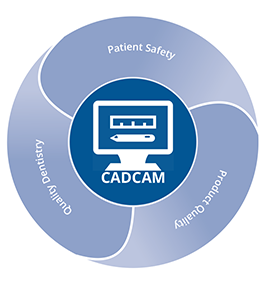Prosthodontist Dr. Mark Ludlow is one of Elos Medtech’s Advisory Board members. He is the Section Head of Implant Dentistry, Digital Dentistry, and Removable Prosthodontics at the University of Utah School of Dentistry and has a lot of experience, knowledge, and insights into digital dentistry. We had a nice chat with Mark to pick his brain about digital dentistry and his experience of being on our board.
Hi, Mark! Digital dentistry is growing stronger by the year. Where would you say digital dentistry is right at the moment?

What we are able to do right now is take the patient from day one and create surgical tools where we can take the teeth out and put implants where we want them to go, have pre-made teeth to go back on top of there, so that we can get things lined up on day one, and have all these parts and pieces pre-made, so that all just come together in the patient’s mouth. I think that is where digital dentistry is right at the moment.
What are your thoughts about digital dentistry and the future? In which direction is it going?
I think where we are going with digital dentistry is just anything we can do to simplify the lives of patients, clinicians, and lab technicians. This is what we are all striving for and trying to do. Because ideally, I think we all want to treat patients the most efficiently possible and with the highest quality level. When combining those two things, we have really found some power.
Digital dentistry allows us to treat patients in ways we have never been able to treat them before. We can get diagnostics, facial scans, and functional movements. We can do things more efficiently, make things more predictable, and increase the treatment outcomes.
I think that where digital dentistry will be moving forward, beyond there, is that those concepts will get better and even more streamlined and get more acceptance throughout the dental community. The other side of things is planning cases anywhere from the simple single tooth all the way up to a full mouth of teeth. Moving forward, I think that by using facial scans, intra-oral scans, artificial intelligence, and big data of what we know of patients and teeth and bite, we will be able to streamline the creation process of what their ideal teeth should be, how everything comes together, and make that all pre-operation, before we ever lay a finger on the patient.
Do you think digital dentistry will take over traditional dentistry?
The most important thing with all of this is that you still use it from a principle perspective. Quality dentistry is always quality dentistry. It is the tools that change, going from using traditional tools to using digital tools. The fundamentals of dentistry are the same. It still has to follow sound tooth preparation principles, prosthetics principles, and surgical principles. It is just the modality in which you actually perform the service that changes.
“Quality dentistry is always quality dentistry. It is the tools that change, going from using traditional tools to using digital tools.”
Over time, these digital tools will replace the conventional tools that we use. The principles, however, have been around for hundreds of years. So, from that perspective, we just need to make sure we keep everything the same.
Elos Medtech has asked you and a few driven dental professionals to be part of their Advisory Board. What is your experience so far?
Yes, we had our first virtual meeting about six months ago. Elos Medtech brought together clinicians from Europe and the US. It was really nice to get different people with different perspectives and different clinical needs all together to speak about how we can help move the industry forward. Getting a bigger perspective than your own really helps you figure out how products and workflows can work globally. You get all those niches together and start to see a clearer picture of how the world is working and how these things can help patients globally versus just one little region. Having that diversity of opinion is a very important thing.
“Getting a bigger perspective than your own really helps you to figure out the best way of how products and workflows can work globally.”
What are your expectations for the future?
My expectations for the future are that we will have some more meetings, brainstorming sessions, and product development sessions. Because there may be somebody in, let us say, Denmark who has a brilliant idea that none of us have ever heard before, that makes all the rest of us really excited. Also, to have this group of people think outside the box on different ways we can treat patients, and by doing that, foster those ideas and realize that the ideas, at this stage, are probably in this little tiny seed form. And then we have to figure out how to help that seed grow into a bigger tree. I think the Advisory Board is able to give some good feedback on how to make products better or ways in which products can be created to fill needs that we see in a clinical environment.
“I think the Advisory Board is able to give some good feedback on how to make products better or ways in which products can be created to fill needs that we see in a clinical environment.”
Thank you so much, Mark, for a lovely chat and for sharing your experience, knowledge, and insights with us.
Must-read blog post: Product development in digital dentistry – Deciding with speed and conviction is key.







